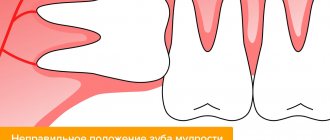Causes
A cystic formation in the form of a capsule isolating the inflammatory focus develops against the background of the following diseases:
– pulpitis, periodontitis;
– extensive carious lesions;
– respiratory tract infections (otitis media, inflammation of the maxillary sinuses, tonsillitis);
– weakened immunity;
– difficult teething;
– bite defects;
– chronic stomatitis;
– cracks, chips of tooth enamel, mechanical injuries to teeth.
Retention cyst of the lower lip
It is a common pathology of the oral mucosa. It is a benign neoplasm in the shape of a ball. The pathology usually develops due to blockage of the duct of the minor salivary gland. The reason for this may be the most common injury or inflammatory process.
The cyst occurs equally in both women and men. Its appearance does not depend on age. The cyst is characterized by the ability to very quickly increase in size, which affects a person’s daily lifestyle. That is why doctors recommend removing it.
The main reasons for the appearance of cysts
The neoplasm most often forms as a result of mechanical damage and trauma to the lip. These include burns, blows and biting. As a result of constant trauma to the gland, the excretory canal becomes clogged, the secretion begins to linger, and a small tubercle forms. Gradually it fills with liquid and increases in size. The inflammatory process after injury can also lead to the formation of pathology. A retention cyst of the lower lip can occur in a person at any age. The neoplasm is often a consequence of the congenital development of the germinal components of the so-called glandular cells.
In addition to traumatic effects, the cause of a cyst can be atrophy of the excretory ducts. Typically, such a violation is caused by a tumor that directly compresses the duct, or by a scar. The latter narrows the canal, and the accumulated secretion gradually expands the glandular lobe.
How to recognize pathology?
A retention cyst of the lower lip is a capsule of connective tissue with viscous contents inside. Outwardly, it resembles a small ball. The formation is painless, but may cause discomfort while talking or eating. The cyst tends to grow rapidly and can reach up to 2 cm in diameter. The mucous membrane above it usually does not undergo significant changes. Sometimes it takes on a bluish tint, which is explained by the accumulation of contents. The ball is covered with connective tissue, and inside it there is a clear liquid resembling saliva. On palpation the formation is soft. When eating food, the capsule is easily damaged, causing its internal contents to spill out, but after that the cyst fills up again. As a rule, the formation consists of one chamber, but cases of multi-chamber cysts are known.
Diagnosis confirmation
Recognizing a retention cyst is not difficult for a qualified specialist. When pressed with a finger, the formation disappears, but after a while it appears again. A more accurate diagnosis can be made after an ultrasound examination. During the procedure, the doctor evaluates the structure of the cyst, its size and contents. By probing the canals, the width of the duct and the presence of salivary stone are determined. Only after a complete examination can a specialist recommend treatment for a retention cyst of the lower lip.
The need for differential diagnosis In order to accurately make a diagnosis and subsequently prescribe competent treatment, it is important to be able to recognize this pathology among other neoplasms of a benign nature. The following types of salivary gland cysts are distinguished: ranula; submandibular; parotid; minor salivary gland. The ranula is localized above the hyoid-maxillary muscle. There are known cases of penetration into the submandibular region. This formation is large in size. It can displace the frenulum of the tongue, thereby preventing a person from fully eating and having conversations. The submandibular gland cyst is characterized by slow development. During palpation it is easy to detect a round formation. When this cyst grows, it can involve the upper areas of the mouth. In such a situation, bulging of the formation into the sublingual part is usually observed. Pathology of the parotid gland is quite rare. The main reasons for its formation include mechanical damage, inflammatory processes and blockage of ducts. It is the same factors that provoke the formation of another anomaly of the oral cavity called a retention cyst of the lower lip (photo presented in this article). The development of pathology at the initial stage is not accompanied by pronounced symptoms. As a result of mechanical damage, a so-called extravasal cyst can form. This formation is distinguished by the fact that granulation tissue is formed around it.
What treatment is required?
This pathology is treated by a dentist. After confirming the diagnosis, there are two possible solutions to the problem. The specialist may send the patient home, believing that the formation will resolve on its own. The second option involves surgical removal of the retention cyst of the lower lip.
The operation itself lasts no more than 30 minutes and involves the use of local anesthesia. The physician assistant twists his lower lip and holds it tightly. The dentist makes several cuts along the formation, frees the cyst from its internal contents and applies sutures. According to many patients, the operation itself, under the supervision of an experienced surgeon, is almost painless. The main troubles begin during the rehabilitation period, when the retention cyst of the lower lip begins to gradually heal. The operation can be performed using a laser. However, its help is used extremely rarely due to severe bleeding and a high risk of perforation of the gland membrane.
Postoperative period
After surgery, patients are advised to treat the affected area daily with a special antiseptic solution and monitor their condition. Some note that the first day after surgery is the most difficult. Talking, eating - all these simple actions cause painful discomfort, but after about a month everything returns to normal. It should be noted that the duration of the rehabilitation period directly depends on the size of the formation. Many patients report visual distortion of the lip and slight numbness even months after surgery. To avoid negative consequences, it is recommended to remove the pathology at the initial stage of its formation.
results
The classification of cysts, which has not lost its relevance today, was proposed by M.I. Kadymova [7]: true or retention cysts; false or cyst-like formations; odontogenic cysts; cysts associated with developmental defects.
In the English-language literature, a distinction is made between secreting cysts (retention cysts) and non-secreting cysts (pseudocysts).
Retention cysts are formed as a result of obstruction of the excretory ducts of the glands of the mucous membrane [8]. Histological examination shows that retention cysts are bilaterally lined with ciliated columnar epithelium; the cyst wall consists of connective tissue with the presence of coarse collagen fibers [9]. On spiral CT (SCT), such cysts appear as round, homogeneous soft tissue formations on a broad base, with clear boundaries, without signs of bone destruction, and without connection with the roots of the teeth.
False (lymphectatic) cysts are located intramurally in the mucous membrane and do not have an internal epithelial lining, which is their only histological difference from retention cysts.
Presumable causes of the formation of false cysts are barotrauma, allergic and inflammatory diseases of the sinuses [3, 10, 11]. According to the results of a study by O. Berg et al. [10] revealed a high content of immunoglobulins, complement and antiproteases in aspirates from intramural cysts, which, along with the bacterial microflora present in them, supports the inflammatory theory of their origin, however, the content of immunoglobulin E (IgE) and eosinophils was within normal limits. The identity of the detected bacterial flora with the oral microbiota allowed the authors to assume that the basis for the formation of intramural cysts is formed by the residual part of the dental leaf.
Several prospective comparative studies have examined the associations between sinus cysts and sinus mucosal pathology and drainage disorders. J. Kanagalingam et al. [12] found no correlation between the occurrence of intracranial cysts and allergies, asthma, or ostiomeatal complex block. The lack of correlation between intracranial cysts and the state of the ostiomeatal complex was confirmed in other studies [13–15].
However, R. Harar et al. [14] noted that in the presence of a cyst, changes in the sinus mucosa, characteristic of chronic rhinosinusitis, are detected on SCT more often than in its absence (52.7 and 41.3%, respectively). The authors concluded that it is theoretically possible for a cyst to form due to transient obstruction of the ostiomeatal complex with subsequent preservation of the ICP after restoration of its patency.
Possible clinical manifestations of an upper lip cyst described in the literature are very diverse: headache and facial pain, difficulty in nasal breathing, postnasal drip, rhinorrhea, sudden discharge of amber fluid from the nose (which is associated with spontaneous rupture of the cyst), numbness of the upper lip, pain in the teeth, etc. [16-19]. However, in many cases the description of symptoms does not contain evidence of their connection with the cyst.
In this regard, the study of F.V. is of interest. Semenova et al. [16]. The authors assessed the dynamics of complaints from 67 patients operated on for upper-crural cysts by questioning patients before and after the intervention, followed by data processing using mathematical statistics methods. Of the 14 symptoms indicated by patients as a reason to see a doctor, 4 disappeared after removal of the cyst: headache (mainly in the frontal region), a feeling of pressure in the projection of the affected sinus, difficulty in nasal breathing and clear nasal discharge/postnasal drip ( p
<0.01). The authors concluded that these symptoms can most likely be associated with the presence of large cysts of the cervical cavity.
If anatomical abnormalities are present, ICP cysts may cause unusual symptoms. N. Sharma et al. [20] described transient paresthesia in the facial area in a patient with a cyst of the upper jaw and dehiscence of the infraorbital nerve canal. The association of paresthesia with the cyst was confirmed by its disappearance after removal of the cyst.
However, in a number of prospective comparative studies, no correlation was found between ICP cysts and sinonasal symptoms [12, 15]. S. Albu [15], in a prospective randomized study of 80 patients, found no correlation between cyst size and facial pressure or nasal obstruction or nasal discharge.
Often, VCP cysts do not manifest themselves at all and are an accidental finding. In a study conducted by the author of this review [21], asymptomatic cysts were identified in 37 out of 177 apparently healthy people (20.9%) who underwent SCT of the SNP for the purpose of occupational selection.
Patients with cysts of the upper jaw often undergo surgical interventions in the absence of any complaints. This is apparently due to concerns among some doctors that the cysts may grow larger and cause complications over time. In this regard, long-term observations using modern imaging methods that evaluate changes in the size of SNP cysts over time are of particular interest (see table).
Changes in the size of intracranial cysts during long-term follow-up
As follows from the summary table of the studies, an increase in the size of the cyst was observed only in 12.7% of patients, in 18.3% it disappeared, in 12.2% it decreased in size, and in 56.8% it remained unchanged.
Based on long-term observation of 18 patients, J. Wang et al. [24] came to the conclusion that if the size of the sinus cyst did not change over 48 months, then they will remain unchanged in the future, although P. Casamassimo and G. Lilly [25] did not note a dependence of the change in the size of the cyst on the observation time.
The most extensive of the studies listed in the table is the work of I. Moon et al. [2] - describes the dynamics of changes in the size of SNP cysts in 133 patients who underwent MRI of the brain for the purpose of preventive examination more than 2 times with a follow-up period of at least 24 months.
The average follow-up period was 40.38±16.09 months (from 24.0 to 109.8 months). In 119 out of 133 patients, during the initial study, cysts were found in the upper jaw, ranging in size from 13.35±9.22 to 15.49±6.94 mm. During follow-up from 24 to 36 months, the size of the cysts remained unchanged in 73% of patients, in 22% they decreased or disappeared, and only in 5% of cases there was an increase in the size of the cyst. Subsequently (more than 48 months), changes in the size of the cysts occurred in a greater number of cases: the sizes of 42% of cysts remained unchanged, 43% decreased or disappeared, and in 15% of cases the cysts increased.
Obstruction of the sinus anastomosis was detected only in 6 (4.5%) patients. The addition of rhinosinusitis during observation was registered in 4 (3.0%) of 133 patients, and in 3 of them there was an increase in the size of the cyst.
Summarizing the data from the studies presented in the table, it should be emphasized that spontaneous regression (reduction or disappearance) of the cyst occurred in 30.5% of cases. The results of the study by I. Moon et al. [2], which had the longest observation period and the maximum number of patients included in it, showed that over time, an increasing number of cysts underwent regression, and the addition of complications was insignificant (3%).
Taking into account these data, the opinion of many researchers [12, 15, 25—28], who believe that the majority of patients with cervical cysts do not require surgical treatment, is quite justified. I. Moon et al. [1] believe that only large cysts that cause obstruction of the sinus anastomosis require removal.
The development of modern rhinosurgery was marked by the introduction into practice of gentle methods for removing cysts of the upper jaw, which replaced the Caldwell-Luc method.
Today, the three most common surgical approaches are:
— gentle opening of the sinus through the anterior wall using a bur or trocar;
- endoscopic endonasal access through the middle meatus,
— endoscopic antrostomy through the lower nasal passage, as well as a combination of these approaches [26, 29—31].
In recent years, a few publications have appeared on the use of the balloon sinuplasty method for the removal of cervical cysts [32, 33].
To select an adequate surgical approach, SCT of the SNP is of great importance, allowing to determine the localization of the cyst, while an important role is played by sagittal reconstruction, which makes it possible to assess the relationship of the cyst with the anterior and posterior walls of the sinuses [26, 34, 35].
In 70% of cases, cysts of the upper sinus are localized on the postero-superior wall, in the lateral parts of the upper wall and in the area of the natural sinus anastomosis, which makes it possible to remove them using the endonasal approach through the middle meatus [26]. In cases where the cyst is localized on the anterior and medial walls of the upper jaw, as well as in the alveolar bay, the endonasal approach through the middle meatus often does not allow complete removal of the cyst and, therefore, other options or a combined approach are required.
A number of authors prefer antrostomy through the lower nasal meatus, explaining its advantage by the preservation of the natural anastomosis [28, 36], as well as convenience, simplicity of surgical technique and good visibility of the sinus [37].
Unfortunately, in the available literature, only a few studies have been found on the frequency of recurrence of intracranial cysts after the use of various sparing access techniques. One of these studies was published by T.V. Banashek-Meshcheryakova, F.V. Semenov [37]. The authors conducted a comparative analysis of the results of removal of intracranial cysts in 120 patients. The patients were divided into 3 groups of 40 people each and operated on via endonasal access through the middle and lower nasal meatus (2 groups) and extranasal access. During a postoperative observation period of 6 months, cyst recurrence was recorded in only 3 (7.5%) patients operated on through the middle meatus. There were no relapses with other access options.
Removal of retention cyst of the lower lip, local anesthesia
A retention cyst of the lower lip is a benign formation formed from a minor salivary gland with a blocked duct. Such a cyst may form outside the gland, but the contents of the cyst will be the same, and its walls will consist of epithelial tissue. What can cause such a pathology and why is it dangerous? Small salivary glands are found in large numbers on the mucous membrane of the oral cavity, in particular on the inside of the lower lip. When biting your lip or as a result of another injury or inflammatory process, the gland duct can be blocked - temporarily or permanently. The saliva produced by the gland will accumulate, forming a cyst with liquid contents. Often, in addition to saliva, the cyst contains blood that has entered the cavity as a result of hemorrhage caused by injury. Temporary blockage occurs as a result of tissue swelling, and after 10-15 days the cyst caused by such blockage will resolve without a trace. If the duct is completely blocked (for example, during the epithelization of an injured area of the lip), such a cyst will increase in size, and at first it will simply interfere during conversation and eating. As it increases, it will begin to create aesthetic discomfort; the contents of the cyst may begin to decompose, causing suppuration, which may result in pain and additional swelling. In some cases, such cysts periodically break through, their contents flow out, but when the site of the break becomes overgrown, the liquid begins to accumulate again, and the process becomes chronic, threatening not only the expansion of the inflammation zone, but also infection with further complications. If the cyst does not break through, it can increasingly increase in size, as a result of which it is increasingly injured; inside it, the process of tissue degeneration into malignant can begin. The risk of malignant degeneration of the cyst is especially high in people who smoke or have a hereditary predisposition to cancer. Therefore, if during the first 15 days after the initial injury the newly formed cyst has not resolved, doctors most often recommend removing it surgically to avoid further complications. It is extremely important to find a competent and experienced doctor who, at any stage of development of the pathology, will determine the degree of danger of the cyst and carry out treatment in the safest and most effective way.
After an initial survey and examination, the doctor may prescribe the patient an ultrasound and probing of the salivary gland canals, as well as puncture of the cyst to obtain a sample of its contents and conduct a histological examination. Sialography may also be prescribed to obtain information about the condition of the salivary glands, the stage of development of the cyst (also called mucocele) and to identify or exclude an oncological process. If, as a result of research, a malignant component of the formation is excluded, the doctor proceeds to prepare for its removal. As with any other surgical procedure, the patient must refrain from drinking alcohol before removing a cyst; If the patient is taking any medications that reduce blood clotting, it is necessary to consult with the doctor who prescribed them regarding the advisability of temporarily discontinuing them. The procedure itself is not very painful, so it is performed under local anesthesia. The doctor can use either a regular scalpel or a laser, radio frequency or ultrasound method of performing surgical procedures. The doctor decides which removal method to choose based on the condition of the cyst, its location, inaccessibility and other information. After the anesthesia begins to take effect, the doctor pulls back the lip, allowing the most convenient access to the cyst. Since it is extremely difficult to fix the lip in a comfortable position, as a rule, the doctor’s assistant holds the lip while performing all manipulations. Next, the doctor makes several incisions along the edges of the formation so that the cyst shell can be completely separated from healthy tissue. Then the doctor completely removes the contents, washes the resulting wound and applies stitches.
After the operation is completed, the doctor gives the patient the necessary recommendations regarding wound care. If the sutures are not made of self-absorbable threads, the patient will need to return after the time specified by the doctor to have the sutures removed. You need to understand that the lips - and their inner part too - are an area with a large number of nerve endings. Therefore, after the anesthesia wears off, after the operation is completed, at first the patient may experience discomfort in the operated area. This is natural, and if the patient conscientiously follows medical instructions regarding the care of the wound and oral cavity during the rehabilitation period, he will soon be able to forget about the cyst and completely return to a full, healthy life.
In the multidisciplinary clinic “Medistar”, only highly qualified specialists, experienced and qualified professionals in their field practice medicine, who have performed a huge number of successfully performed operations of varying degrees of complexity. Modern technical equipment and our own laboratory allow you to go the entire way - from diagnosis to complete treatment - within our medical center, without leaving it in search of any procedures or diagnostic methods.










